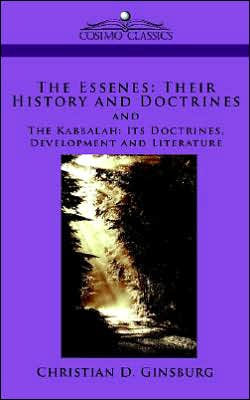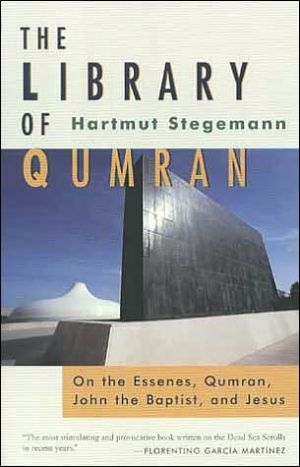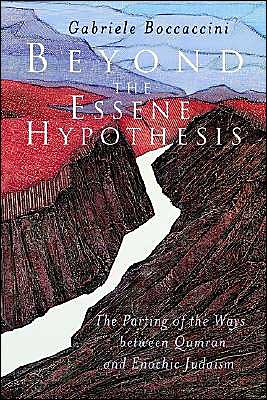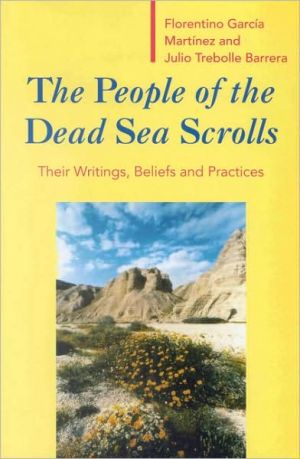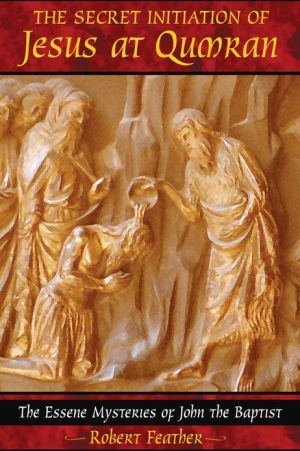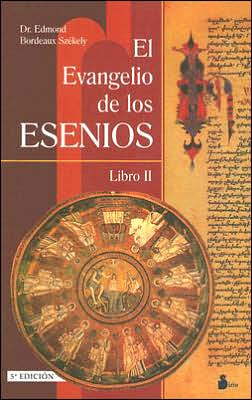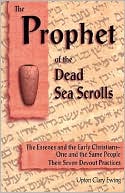Jesus the Wicked Priest: How Christianity Was Born of an Essene Schism
Decodes the Dead Sea Scrolls to reveal Christianity’s hidden Essene origins\ • Reveals the Essenes as key figures behind Jesus’s trial, torture, and crucifixion\ • Shows how Jesus, a former Essene himself, was deemed “the Wicked Priest” for his liberationist politics and humanist bent\ • Examines the lost Christian doctrine of reincarnation and the secret role of Gabriel in the Virgin Birth\ The Dead Sea Scrolls, discovered in 1947 at Qumran, are generally believed to have been written by a...
Search in google:
Jesus the Wicked Priest shows how Jesus, a former Essene, was deemed the "Wicked Priest" for his liberationist politics and humanist bent. It also reopens Christian doctrinal questions such as reincarnation and the Virgin birth--even demonstrating that these two issues are related. Curled Up with a Good Book " . . . an attention-getting and provocative title. Appropriate, too, for the inevitably controversial ideas put forth in Vining's book. . . . The premise for this interesting interpretation comes from the Dead Sea Scrolls, which speak of the Teacher and the Wicked Priest."
From Part 2\ Identifying the Essenes in the New Testament\ By now, most informed readers should be familiar with the scholarly consensus that a Jewish sect known as the Essenes wrote the famous Dead Sea Scrolls found in 1947 near a small Judean village known as Qumran. But who were the Essenes? We know that the Essenes existed from at least the second century BCE to the fall of Israel to the Romans in 74 CE, though in all likelihood they were around much earlier. In other words, we know the Essenes existed before and well through Gospel times. But why is it that the Essenes never once appear by name in the New Testament? Reason says we should find them there, right alongside the Pharisees, the Sadducees, and the Zealots.\ It has been suggested that the New Testament is silent about the Essenes because the Essenes themselves were the early Christians. In 1863, long before the Scrolls were discovered, Ernest Renan published a biography called The Life of Jesus (La Vie de Jésus), one of the first scholarly attempts at recovering the historical Jesus of Nazareth. Renan, a controversial biblical scholar even in his time, made the claim that Christianity was a branch of Essenism that survived. While I, too, believe this to have been the case, Renan’s claim was somewhat premature and needs qualification. In this chapter, I will identify the Essenes in the New Testament, shedding new light on Jesus and the origins of Christianity.\ 6 THE HISTORICAL PARADOX\ Renan published his views before he could possibly have understood how complex the relationship was between the Essenes and the early Christians, a relationship that might have remained hidden forever except for the discovery of the Dead Sea Scrolls. A curious fact emerged once scholars began to translate and understand the Scrolls. The Essenes seemed to influence the early Christians more than any other Jewish sect, yet the Essenes were the very sect whose ideology the early Christians most despised. The late Yigael Yadin, an Israeli archeologist who published numerous books and articles on the Dead Sea Scrolls, called this finding a “historical paradox.” He knew the Scrolls presented us with a great many mysteries that would not easily be resolved.\ [The Essenes] clung tenaciously to the most rigorous interpretation of the Law of Moses in general, and in particular to the ordinances on the Temple and its rituals, festivals and sacrifices alike. Yet it was this very sect, of all the Jewish sects, that had the most profound influence on the beliefs, practices, organization and even the phraseology of early Christianity. Christianity eventually strove to detach itself from the Law of Moses. How was it, then, that this most extreme and Orthodox Jewish sect had this impact on Jewish Christianity which was subsequently to fight against the legalist and rigid interpretation of the Law of Moses, and finally to reject that Law?\ How can this paradox be resolved? It is resolvable only by recognizing the revelation, the life and teachings, of a former Essene known as Jesus of Nazareth. The formative years of Jesus, perhaps many of the mysterious missing years between the ages of twelve and thirty,* were undoubtedly spent with the Essenes. More than likely, the majority of Jesus’s Jewish followers were Essenes also. The point at which the Christian movement became the “Church” has produced a great deal of speculation through the years. I prefer to think that the Church was born the moment of Peter’s confession (Mt 16:13-20), the moment Jesus’s messianic secret was first fully realized among his disciples. If we take this as the point of departure, the relationship between the early Church and the Essenes was very complex indeed. Peter was a former disciple of John the Baptist, as was likely Andrew, Peter’s brother (Jn 1:35-42). If John the Baptist was an Essene, as I argue in chapter 5 (section 44-46), then it is possible that at least these two disciples, Peter and Andrew, were either Essenes or Essene proselytes. I think it likely that most of the disciples were Essenes. Yet there came a time when Jesus broke from the Essenes, when his theology was no longer theirs. What is so remarkable about the Dead Sea Scrolls, and so challenging to scholars—which explains why so few have been able to make sense of them—is that they give us a reverse perspective of the Gospel narratives. The Scrolls record in great detail much of Jesus’s life—important dates, references to persons, places, and events—but we see these details through the eyes of his enemies. It was the strong negative correlation to Gospel events that convinced me my restoration was accurate.\ *These are called the “missing” years of Jesus because the Gospel accounts in the orthodox canon are completely silent about them.\ 7 RECOVERING JESUS’S FORMATIVE BACKGROUND\ Because the relationship between the Essenes and Jesus was so complex, it is best understood if we start from the beginning. From what I can gather, neither the Gospels nor the Scrolls mention anything directly of Jesus’s formative years. Yet we can reasonably conclude that Jesus was raised an Essene because, like any person, his thoughts and actions reflect his upbringing. The Gospels show that Jesus taught distinctively Essene doctrines, such as a strict prohibition of divorce (Mk 10:2-9; 11Q19 57.17). He was apparently not married and honored celibacy in service of God (Mt 19:12), a fact that is quite striking considering the Essenes were the only Jewish sect who practiced celibacy at the time (War 2.121). Both he and his followers used the same phraseology or concepts as the Essenes, like the term “Holy Spirit,” which appears nowhere in the Old Testament but was found abundantly in the Scrolls, or “sons of light,” “sons of darkness,” reflecting the Scrolls’ Zoroastrian influence (Lk 16:8; 1QS 3-4). He was a cousin of John the Baptist, whom many scholars have held to be an Essene, as was also James, Jesus’s half brother.
Acknowledgments xiA New Day Dawns in Dead Sea Scrolls Research 1Is This Work "Fringe" Scholarship? 3A Question of Science 3Paleography 5Let the Reader Decide 7Unashamedly Apologetic 8Identifying the Essenes in the New Testament 12The Historical Paradox 13Recovering Jesus's Formative Background 15The Christology Question 17A Dynamic Relationship 19Did Jesus Himself Lead an Essene Schism? 21The Real Jesus 23The Essenes: Still a Mystery 27Herodians: A Minor New Testament Name for the Essenes 28A Door Is Opened 33Scribes: The Primary New Testament Name for the Essenes 35Etymology: The Essenes Are "The Pious" 37The Scribes Emerge as an Order 39The Pious/Hasideans Are the Scribes 41The Curious Copper Scroll Explained 42The Scribes Are the Essenes 43An Exegesis Showing the New Testament Scribes Are the Essenes 44We Have All Missed the Forest for the Trees 52Understanding the EssenePesher Method 57The Furious Young Lion 60Pesher as Sympathetic Magic 61Interpreting the Nahum Pesharim 67Unacceptable Anomalies 68Who Is the Furious Young Lion? 72Paul's "Damascus" 72Identifying the Manneseh and Ephraim 73A New Paradigm 75The Lost Christian Doctrine of Reincarnation 77A Brief History of Reincarnation within Christianity 79Origen's Unique View of Reincarnation 82The Essene Belief in Reincarnation 84Did Pythagoras Learn Reincarnation from the Essenes? 87Reincarnation in Judaism and Early Christianity 88Hasidism and the Kabbalah 89Angels in the Dead Sea Scrolls and Other Jewish Literature 93Melchizedek 96Enoch 99Christian Reincarnation Doctrine 101The Teacher of Righteousness Revealed 111Three Messianic Figures Expected by the Jews 112Three Messianic Figures Expected by the Essenes: The Prophet, the King, the Priest 113John the Baptist, the Prophet 114Elijah Come to Life 114Essene Baptism as Early Christian Baptism 116Telltale Essene Lifestyle and Doctrines 118An Identifying Exegesis 120Jesus the King 121A Divergence in Doctrine: Early Gnostic Influences 124A Difference in Messianic Expectations 131A "Pierced" or "Piercing" Messiah? (4Q285 v) 132The Teacher of Righteousness, the Priest 134Astrology 135The Birth of Noah 138The Teacher of Righteousness Prophesied by Malachi 139The Messianic Anthology (4Q175) Revisited 143A Brief Scroll Exegesis on the Teacher's Self-understanding 143The Historical Name of the Teacher Revealed 144The Secret Role of Gabriel in the Virgin Birth 149Parthenos or Almah? 149The Septuagint 152How Far Back Does the Doctrine Go? 153Is the Virgin Birth Doctrine Traceable to the Essenes? 155Thiering's View 156A Knights Templar Tradition and Thiering's Identification of Gabriel 157Jesus's First Birthday Hymn 159Gabriel's Reflection on His Secret Task 161Comments in Anticipation of My Critics 165The Teacher of Righteousness and the Passion of Christ 167The Trial According to Nicodemus 168The Sabbath and the "Son of Man" 171The Prosecutors Cut Their Losses 174The Aftermath 176Pilate Passes from the Scene 178Assessing the Real Responsibility for the Crucifixion 179Recovering the Teacher of Righteousness's "House of Exile" 185Recovering the "Nahum" of the Nahum Pesharim 187Why Write Pesharim on the Book of Nahum? 188Capernaum: The Birthplace of Christianity 189Capernaum: The Center of an Essene Schism 189Correlating the Scroll and Gospel Descriptions 191Amassing Further Evidence 198The Crucifixion Mentioned 200The Fatal Law 205The Teacher Passes from the Scene 206The Akedah 208"Righteousness Is Not in a Hand of Flesh" 210Benediction 211Notes 212Selected Bibliography 222Index of Ancient Writings 226Index of Modern Authors 235Index of Subjects 238
\ James D. Tabor“Marvin Vining has produced a fascinating and engaging book with a provocative thesis—namely that the Dead Sea Scrolls refer directly to Jesus of Nazareth and that the Essene movement that they represent opposed him as the character they called ‘The Wicked Priest.’ This sort of connection between Jesus and the Dead Sea Scrolls, both in terms of chronology and history, has been dismissed by almost all scholars in the field. Vining skillfully puts the case back on the table. He deserves a careful reading by non-specialists and those in the academy alike.”\ \ \ \ \ Clayton Sullivan“Vining’s work is remarkable Christian scholarship. I highly recommend this book to anyone interested in the Essenes, Jesus, and the early Christian Church.”\ \ \ Curled Up with a Good Book" . . . an attention-getting and provocative title. Appropriate, too, for the inevitably controversial ideas put forth in Vining's book. . . . The premise for this interesting interpretation comes from the Dead Sea Scrolls, which speak of the Teacher and the Wicked Priest."\ \ \ \ \ Gesigewigu" . . . Vining stuck with standard resources and presented the theories in a well thought manner."\ \ \ \ \ The Midwest Book Review" . . . takes a hard look at the historical Jesus . . . a startling new look at Christianity."\ \ \ \ \ The Pokey Finger of God"[Vining] makes no excuses for his leaps of faith, but instead documents them as the insights they are. While this is hardly the first or last word on any of these topics, Vining's unique reconstruction is a valuable contribution to the field."\ \ \ \ \ Michael Gleason"While this is a book aimed at a Christian audience, it does offer some perspective on Pagan beliefs in the early Common Era. Whether or not you find it useful in your own understanding of Christian origins, it should encourage an open-minded approach to religion in general."\ \ \ \ \ Jennifer Hoskins"Vining shows the reader why Jesus is the Wicked Priest for reacting against some of the strict ascetic and often self-defeating doctrines of the Essenes. . . . This is a controversial work. It does challenge many Christian doctrines. Vining has done detailed research and it is apparent in his writing that he is a man of great faith. . . . suitable for both the interested lay person as well as the biblical scholar."\ \

